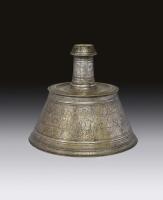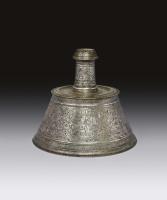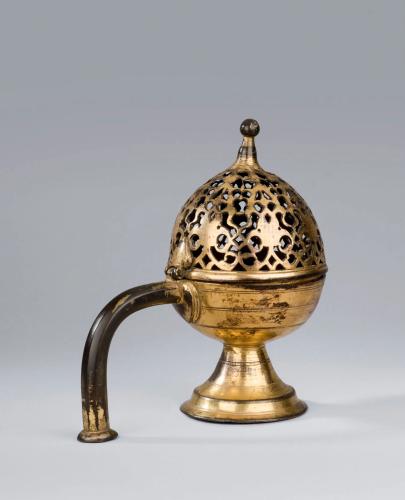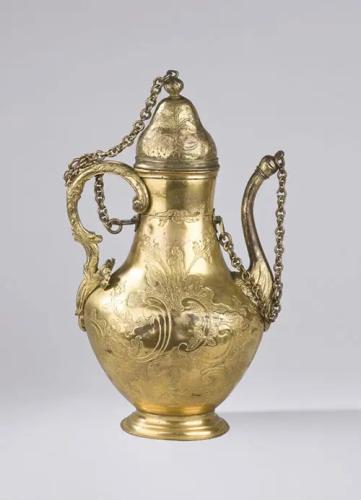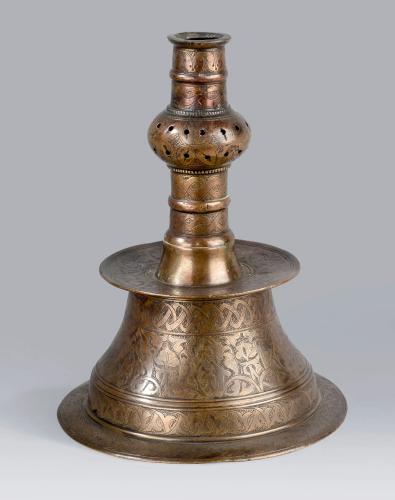
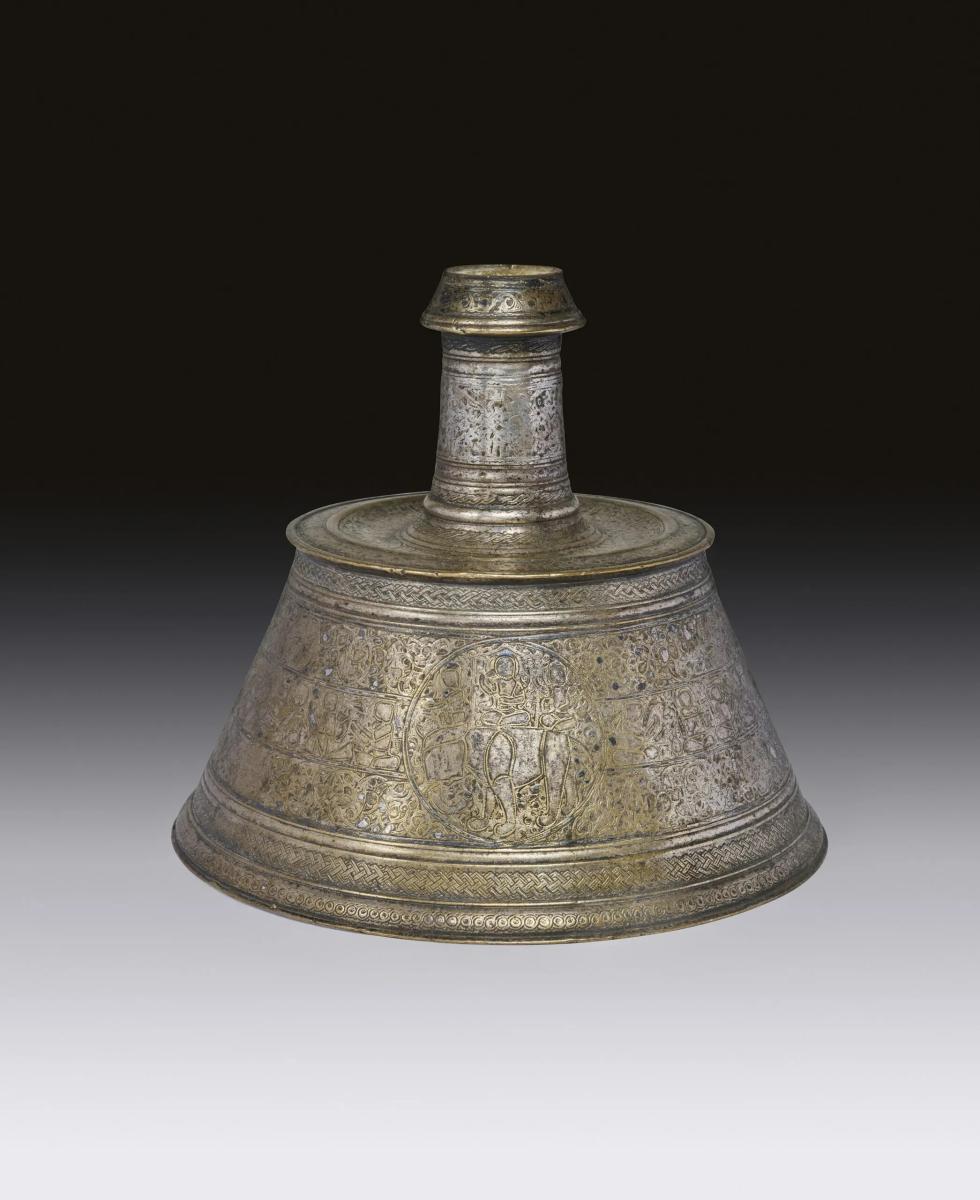
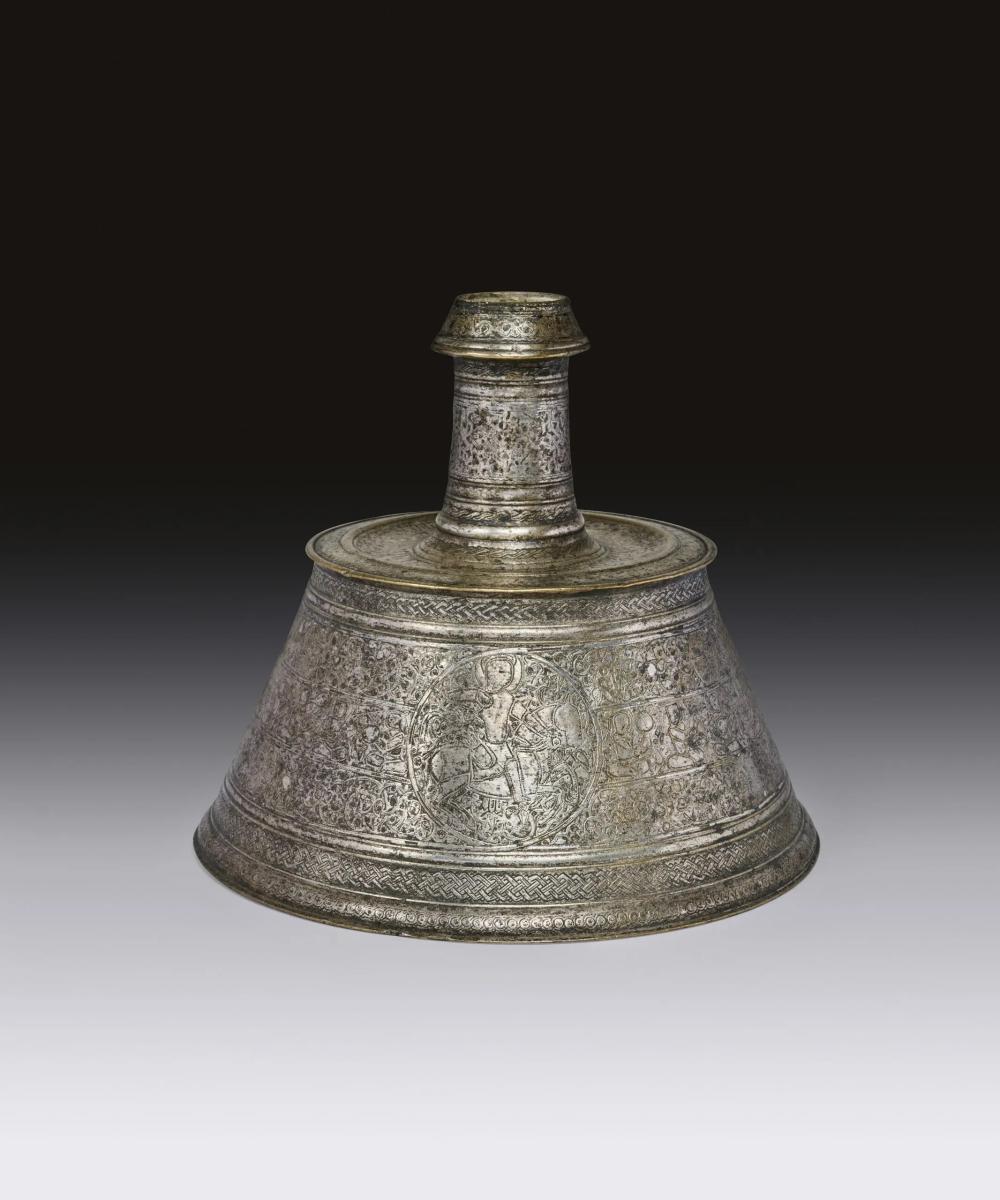
Price on application
This object is eligible for a Certificate of BADA Provenance
The BADA Standard
- Since 1918, BADA has been the leading association for the antiques and fine art trade
- Members are elected for their knowledge, integrity and quality of stock
- Our clients are protected by BADA’s code of conduct
- Our dealers’ membership is reviewed and renewed annually
- Bada.org is a non-profit site: clients deal directly with members and they pay no hidden fees
Early Mamluk Silver-Inlaid Brass Candlestick.
Egypt.
Second Half of the 13th Century.
Height: 18,5 cm.
Inscriptions on the shoulder and neck: عز الدائم [al-‘izz al-daim…] (perpetual glory…).
The base of truncated conical form, the projecting shoulder leading to a concave drip-tray, the narrow tapering cylindrical neck ending with a conical socket, the body decorated with a figural frieze of musicians and three roundels with horse riders and a figure riding an elephant, the drip-tray and neck with bands of calligraphy.
This candlestick belongs to an important group of early Mamluk cast brass examples produced in Cairo within the first century of Mamluk rule. One of their distinctive features is a domical openwork bracket inside the base, also visible on our candlestick. Please see, Toby Falk, Treasures of Islam, London, 1985, p. 277, no. 286.
In a discussion of these candlesticks, Dr. Rachel Ward establishes their provenance based on the inscription of an example in the Cairo Museum of Islamic Art (inv. no.1657), [published in the 1981 exhibition catalogue Renaissance of Islam: Art of the Mamluks, (Texts by Esin Atil) Washington, pp. 57-58] dated in 1269 AD, attributing it to a Cairene workshop. The present candlestick is closely related to a piece in the Nuhad Es-Said Collection (please see, James Allan, Islamic Metalwork: the Nuhad Es-Said Collection, 1982, pp. 80-83, no. 13), which was also ascribed to a Cairene workshop circa 1270. This makes these objects some of the earliest known pieces of Mamluk metalwork from Cairo.
Their design inherited from the figural tradition of earlier thirteenth century Ayyubid metalworks. Similar roundels with a cheetah sitting behind a mounted rider can be found on the Nuhad Es-Said candlestick, and on a thirteenth-century example from Syria (please see, E. Baer, Metalwork in Medieval Islamic Art, New York, 1983, p. 233), while a roundel showing three figures riding an elephant is on a basin in the Victoria & Albert Museum, dated 1250-1350 (inv. no. 2734-1856). Its catalogue entry states that figural scenes on Mamluk metalwork were common until 1300, after which they were replaced by benedictory inscriptions.
The tradition of depicting people and animals has always been alive in regions where the Muslim faith spread. The tradition of depicting people and animals has deep roots in Seljuk, Ayyubid and early Mamluk art. Especially in Seljuk art cosmological and mythological human and animal figures come to the fore. But in general, figures were not just used for a decorative purpose but also to convey religious, cultural and political messages. The most frequent themes are a ruler seated on a throne as a symbol of sovereignty; battle scenes, scenes of palace life showing activities such as shooting with a bow and arrow on horseback, hunting with hawks, playing polo, figures of musicians, dancers, servants offering wine in a cup which represent palace entertainments. For further information please see, Motif from the Sadberk Hanım Museum Collection (written by Turgut Saner, Şebnem Eryavuz and Hülya Bilgi), Sadberk Hanım Museum, Istanbul, 2020, pp. 146-147.
This candlestick’s decoration is also characteristic of a style attributed to the ‘Mosul School’. In the Cairo Museum of Islamic Art, the aforementioned candlestick (inv. no.1657) and another comparable piece with a band of musicians, dated 1269-70 (Please see, Jonathan Bloom & Sheila Blair, The Art and Architecture of Islam 1250-1800, London, 1995, pp. 97-98, no. 126) both bear an ‘Al-Mawsilī’ (from Mosul) nisba. Based on the conjecture attaching all Mawsili artists to the same Cairene studio, these candlesticks thus provide a rare opportunity to study the stylistic and technical development of a single workshop between about 1269 and 1330, while documenting the transitional period of early Mamluk metalwork. For other published examples, see the appendix in Dr. Rachel Ward’s article “Tradition and Innovation: Candlesticks made in Mamluk Cairo” in Islamic Art in the Ashmolean Museum, Oxford Studies in Islamic Art, vol: 10, Part II, edited by J. W. Allan, 1995, pp. 147-158.
Provenance
Ex-Private French Collection.
The BADA Standard
- Since 1918, BADA has been the leading association for the antiques and fine art trade
- Members are elected for their knowledge, integrity and quality of stock
- Our clients are protected by BADA’s code of conduct
- Our dealers’ membership is reviewed and renewed annually
- Bada.org is a non-profit site: clients deal directly with members and they pay no hidden fees


